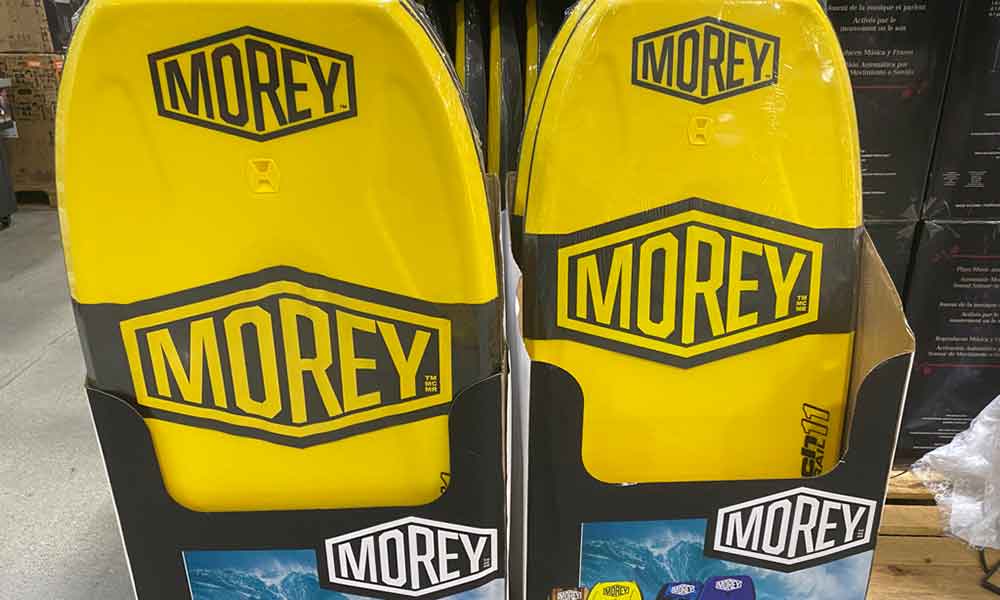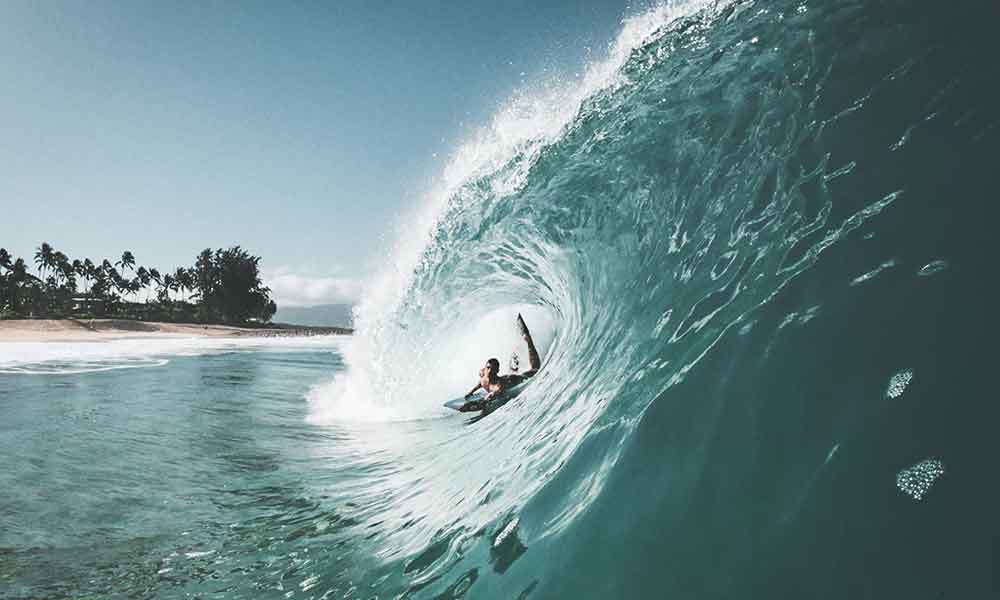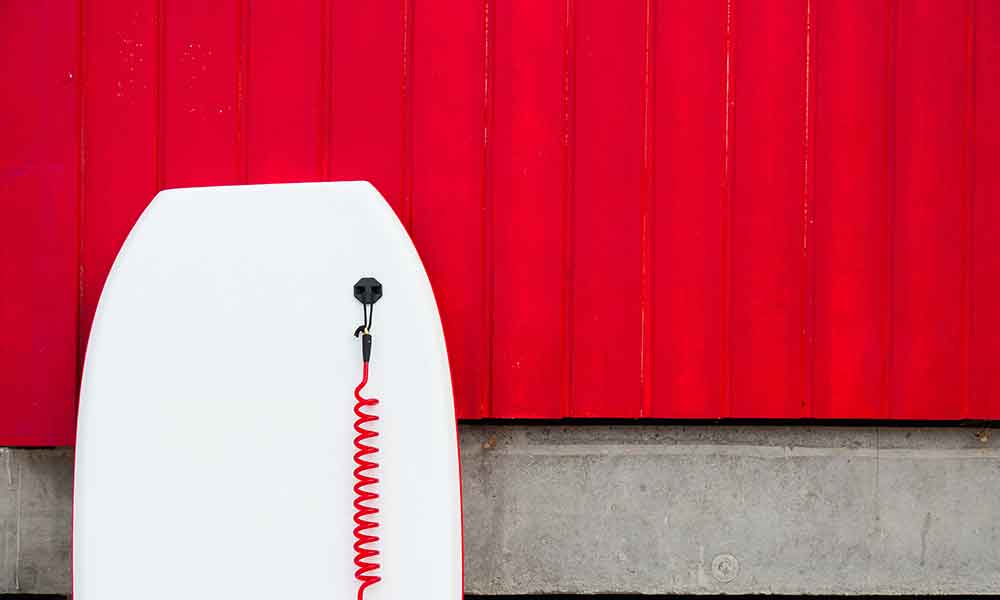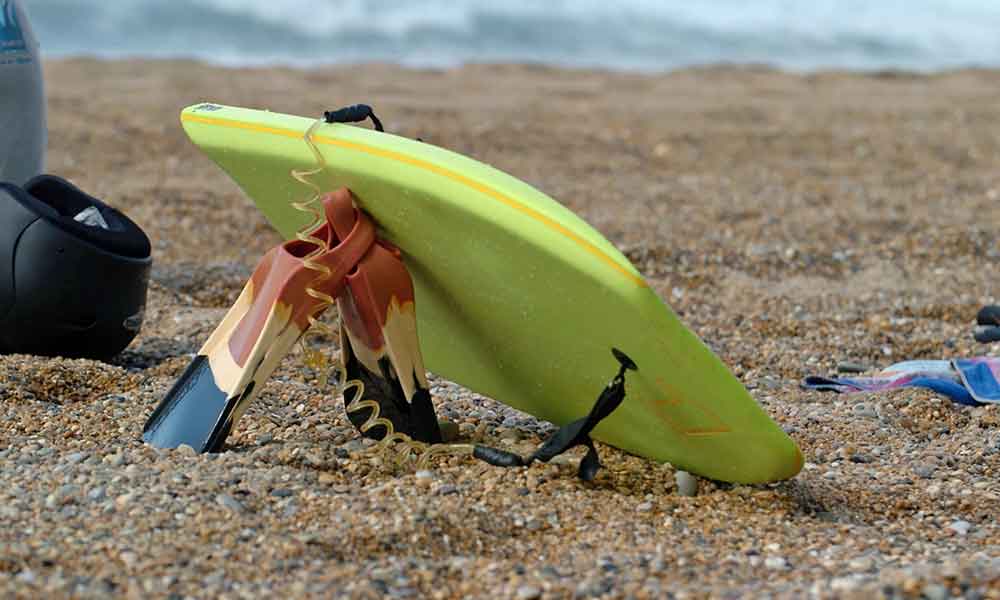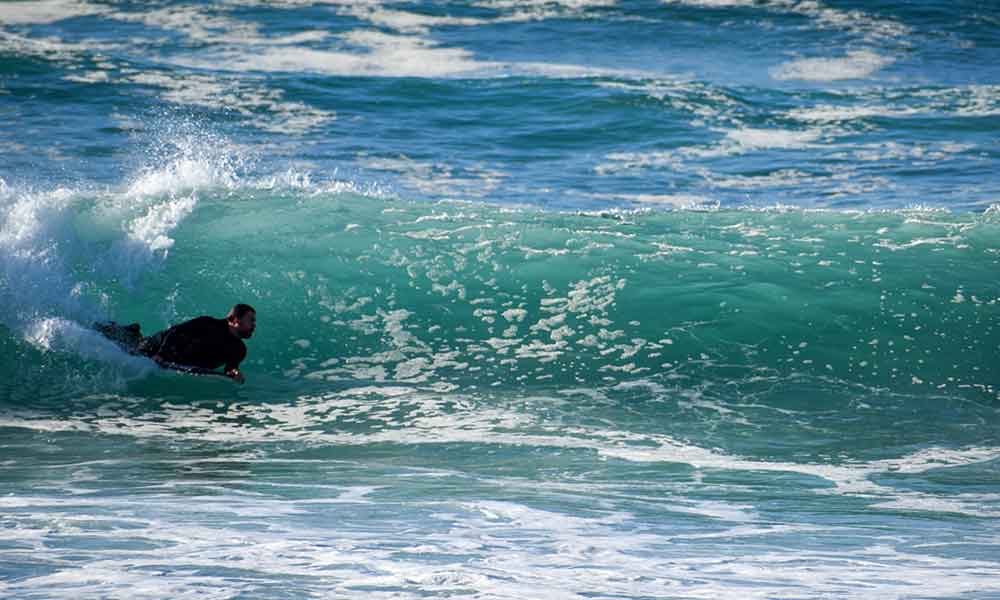Boogie board or bodyboard, what’s the difference? Well, in simple terms, the former is a brand name and a type of bodyboard while the latter is a name that can be used by all brands.
Think of it in the same context as Jacuzzi vs hot tub—they both serve the same purpose and many consumers use the two names interchangeably, but one is a product type and the other is a brand name.
But that still begs the question, why would you—if indeed you should—choose a boogie board over a bodyboard made by another brand? What do boogie boards offer that you can’t get elsewhere and are they worth the money?
The Morey Boogie Board
The boogie board was invented by Thomas Hugh Morey, better known as Tom Morey.
Morey was born in Detroit, Michigan on August 15, 1935. He was a keen surfer in his youth and he was also a skilled creator and engineer who used his talents to increase his enjoyment of the waves.
Before he invented the boogie board, Morey invented a travel surfboard that he called the Trisect and a wax replacement known as Slipcheck.
In the 1960s, Morey had success with the W.A.V.E, a type of removable fin system and in the early 1970s, he came up with the idea for the first boogie board.
The Invention of the Boogie Board
In the summer of 1971, Tom Morey was living on the Big Island in Hawaii. He had a 9-foot chunk of closed-cell polyethylene that he decided to cut in two and shape using an iron and a newspaper, pressing the former down first before shaping with the latter.
After a night of shaping, he woke the next morning eager to test his invention. It was said to have been 23 inches wide and four-and-a-half feet long with a round nose, square tail, and sharp edge. It weighed around 3 pounds and Morey took it to the west coast of the island to test it.
Morey is quoted as saying that he could “feel everything” on the board, and that made him excited. It moved quickly, turned easily, and felt great. It was an experience that he couldn’t get with a surfboard, and as the board could be made cheaply and with basic materials, he knew he was onto something good.
By the end of the year, Morey had signed a deal with Larry Smith from G&S Surfboards, lighting the first spark of the bodyboarding revolution.
Initially, the boards were named SNAKE, which stood for Side, Navel, Arm, Knee, and Elbow. Thankfully, that name didn’t last and the term “Boogie Board” followed shortly thereafter.
The term came from “Boogie Woogie”, a rhythmic musical style that set the perfect tone for this exciting style of surfing.
The first print advertisement for the “Morey Boogie” featured a letter from Bob Conway to Tom Morey, with the former thanking the latter for creating a board that offered “the closeness and freedom with the wave that you get in body surfing [along with] the speed and maneuverability of board-surfing”.
The 1971 publication listed a price of $25 per board, with free shipping across the United States.
In later years, the price would increase to $37, and it became hugely popular with surfers and other water sports enthusiasts.
Morey sold hundreds and thousands of his boogie board and many of these were cut, shaped, and glued in Tom’s backyard. When he realized that the glue was affecting his health, Morey began selling boogie board kits, giving consumers everything they needed to create their own boards and negating the need for Tom to shape and glue them himself.
The Early Days of Boogie Boarding
The first Morey Boogie contest was staged in Carlsbad in 1976 and a year later, the brand was sold to Kransco. By that time, Morey was producing over 80,000 boards a year.
Within 15 years of boogie boards being invented, there were regular boogie boarding competitions hosted around the world and these boards became a common sight at beaches all over the world.
Some other momentous occasions in the history of boogie boarding included the 1982 International Morey Boogie Bodyboard Pro Championships at Pipeline, which was won by Daniel Kaimi, and Mike Stewart’s 1983 victory in the same competition.
Mike Stewart’s victory was actually the first of nine world titles, each as impressive as the last. Stewart invented several techniques and tricks and would later launch his own company (Mike Stewart Science Bodyboards), ushering in a new age of modern bodyboarding.
In 1994, four years before Stewart founded Science Bodyboards, Morey Boogie became part of Wham-O. By 1999, there was a PC game, a European tour, and hundreds of world-class wave riders.
What Makes Boogie Boards Unique?
You know the boogie board story, but what makes this board special?
Firstly, boogie boards are made to a very high standard. A lot of bodyboards that you find on sites like Amazon are made cheaply in China by generic brands. They’re not bad, but they haven’t gone through the same strict design process or rigorous quality control.
As a result, buying a boogie board means you should get a stronger and more flexible board, albeit one that has a much higher price tag.
Boogie boards make great beginners boards and are good for any riding style (prone riders, drop-knee riders) due to the variety on offer. You can opt for big boards like the Big Kahuna and the Rebel XXXL or much shorter options like the Blue Boogie.
You can find these boards at many surf shops worldwide, and they are also sold on online retail sites like Amazon.
That’s not to say that other companies don’t produce good boards and should be ignored. In fact, Mike Stewart’s Science Bodyboards are some of the best in the business and are favored by experienced riders and pros. There are also some great independent brands. But if you want a board that is steeped in history and you’re willing to pay a little more for the pleasure, you can’t go wrong with a Morey Boogie Board.
What Happened to Tom Morey?
After selling Morey Boogie in 1977, Tom Morey spent a decade in Hawaii. He is said to have worked as a consultant through the day while moonlighting as a jazz musician during the night.
In the mid-80s, Morey moved to Washington where he worked for Boeing for 7 years. He then moved to Southern California and helped with the development of the Wham-O Boogie Board under the name, Morey Bodyboards. By 1999, he had founded TomMorey.com, changed his name to “Y”, and was living in Carlsbad.
He developed the Swizzle board in a small workshop. These boards were parabolic-shaped longboards and were sold under his new surf company, Surfboards by Y.
On October 14, 2021, Tom Morey passed away. He was 86 years old.
Summary: Bodyboard or Boogie Board?
For clarity, both of these terms mean the same thing, but “Boogie Board” is a brand name while “Bodyboard” is a product type. A boogie board is a bodyboard but a bodyboard isn’t a boogie board unless it’s made by Morey Boogie Boards.
Easy, right?
Well, to make things more confusing, many boarders refer to their boards as “boogie boards”, even though they’re not manufactured by Morey. Still, that’s to be expected, as it’s something we see with many other products, including hot tubs (Jacuzzi), flying discs (Frisbee), tissues (Kleenex), sticky notes (Post-It), and cotton swabs (Q-tips).
Sometimes, the product creator or most influential brand becomes synonymous with the product itself, and that’s essentially what happened with the boogie board.

